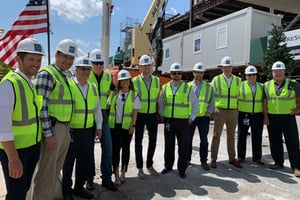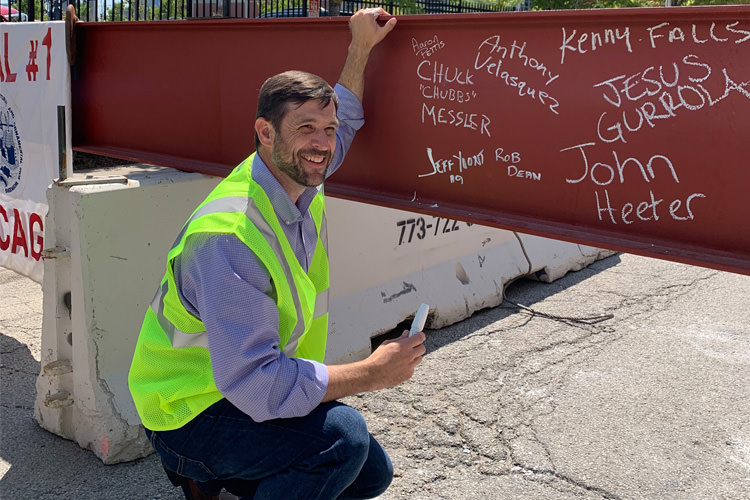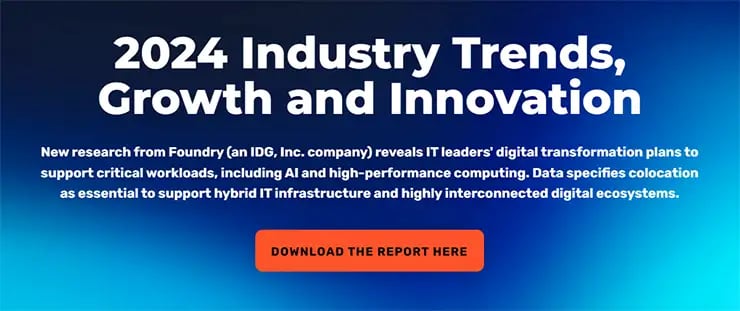
De-Constructed: Building and Maintaining World-Class Data Centers
The data center industry is hot. By 2023, analysts project the global data center market to grow at an average compound rate of 17%, a jump of more than $284 billion during the forecast period.
Enterprise organizations across the spectrum are rapidly adopting multi-cloud strategies to gain speed and efficiency. At the same time, massive growth in data from streaming content, connected devices and a proliferation of new apps and services are driving companies to look for more space, power and extensible infrastructure. The demand is driven by current business needs and the need to have good optionality to use new cloud and digital products delivered in the future.
As a result, solutions providers are investing heavily in new data centers at the edge and retrofitting existing facilities to incorporate the latest technologies. But building future-proof facilities at the breakneck pace the market demands is no easy feat.
With nearly 15 years of construction management experience, Rob Dean, VP of Design and Construction, has been involved with almost every aspect of a successful construction project. He has led capital improvement projects for a renowned public American university, managed projects for national General Contracting companies, and now leads the team that designs and builds CoreSite’s world-class data center facilities.

Rob Dean signing the final steel beam at CoreSite's CH2.
In each stop, Rob learned that repeatable features and processes are essential, but each project is unique and challenging in its own way. “All projects have similarities,” he says. “However, every project has its own nuances, and each one has the potential to challenge the limits of your team's skill, expertise and patience.”
Against that backdrop, here's a look at what it takes to build a modern data center, how companies might decide whether to create a new facility or update an existing one and the lengths involved in juggling multiple projects while prioritizing quality technology.
Market-Driven Decisions
As a customer-driven organization, CoreSite builds where its strongly-interconnected customers most value new space and power. The overwhelming customer preference is to continue to expand our current campuses. Creating an interconnected marketplace of interoperating companies takes much time and effort – and current customers frequently need to expand while encouraging the growth of the overall community of customers. Hence, CoreSite typically builds within its existing markets.
From there, we evaluate our land and building inventory in the market. One of CoreSite's goals is to proactively acquire critical parcels of land in its markets and make it shovel ready for development so we can keep up with campus growth needs. Each parcel of land has to have extensive fiber availability, power capacity and availability from nearby substations. They also have to be appropriately zoned, and some markets have unique environmental reviews. It is not easy to meet these criteria quickly. CoreSite is aided in each market by General Managers who keep up with landowners, brokers, regulatory authorities and power company officials.
Frequently, CoreSite can meet expansion needs in existing markets by building out new computer rooms in existing buildings and designs each new building to be buildable in phases to provide this agility in meeting demand.
Building the Team
Once the decision is made to construct new space, the Construction team is responsible for managing the design development process, applying for applicable permits, ordering equipment, managing specific budgets and timelines and adhering to quality standards for both individual hardware items and the building as a whole. Most design work follows design and product guidelines developed in detailed annual reviews to make sure new buildings and computer rooms stay up-to-date in addressing customer needs.
Once construction starts, the Construction team routinely collaborates with the data center Operations team, Engineering department and other CoreSite experts to ensure the entire process — from conception through delivery and commissioning to and post-opening customer support — is well-aligned. Frequently, significant customer space and build out are delivered simultaneously with new buildings or computer rooms.
To overcome the challenges of the process and the extensive coordination involved, our Construction team is comprised of seasoned industry professionals with years of experience in the construction industry and who understand the nuances and complexities of data center construction. More importantly, our employees are innate communicators and problem solvers, enabling effortless collaboration and tighter integration with other teams to properly leverage diverse skills to deliver the project on time, on budget and exceeding customer expectations.
Vetting Partners and Refining Processes
Of course, the size and scope of building a data center (whether brand new or a computer room in an existing building) can’t be done by a skeleton crew. Effectively developing modern, hyperconnected data centers requires a diverse virtual team of consultants, designers, builders and vendors.
CoreSite has built a reputation for high-quality facilities and operations, primarily due to our strict adherence to the company's core values and mission. Specifically, CoreSite's focus on exceptional customer experiences influences the way general contractors, trade contractors and all related vendors are chosen. The selection process begins with an extensive request for proposal (RFP) in which competing partners must validate their teams' experience, demonstrate their competency and explain their plan for delivering a high-quality project.
Even after a thorough vetting process, there’s still room for improvement. Each new CoreSite data center benefits from our experience and lessons learned to date. After a project is completed, we perform a "lessons learned" meeting with all vendor partners and stakeholders that allows us to identify strategies for improvement to apply to the next project.
Additionally, project conception to project completion, we implement a process called "Data Center Readiness" that allows our internal stakeholders to discuss and coordinate all facets of a new project. Not only does this help create a smooth transition to Operations and Sales teams, but it's also a vital learning opportunity for identifying scope gaps, design concerns and budget or delivery challenges that could impact future projects.
A Goal Without a Plan is Just a Wish
When a core service or solution is in such high demand, it's easy for a business to get caught up in the madness of a feeding frenzy. But simply chasing the next deal or overcommitting in the name of revenue is a sure path to failure — especially in the data center realm, where businesses depend on high-quality, reliable infrastructure.
CoreSite’s methodical, strategic approach to data center construction enables us to address both our customers’ and our own business needs now and in the future. The emphasis on collaboration, alignment and continuous improvement is repeatable and scalable, making it possible to deliver consistently secure, reliable and state-of-the-art data center facilities, rapidly, as organizations across the country have come to expect from an industry leader.
Click here to learn more about CoreSite's nationwide data center portfolio.








